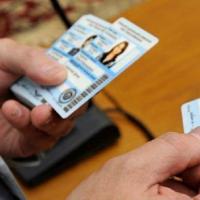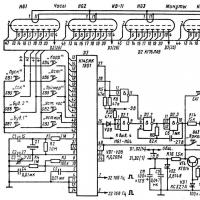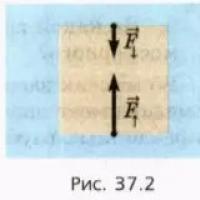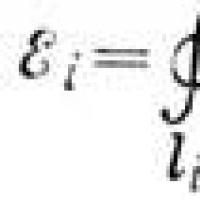Circuit diagram electronics g 02. Repair of desktop electronic clocks. Payment terms: To a Sberbank or Alfa-Bank card
Description of electronic watch repair Janus, made in the USSR. The basis of this watch is the K145IK1901 microcircuit - a common Soviet controller for building electronic watches. The time is displayed on the large green indicator IVL1-7/5. Based on the experience of working and repairing such watches, we can conclude that most often the quartz resonator fails, the electrolytic capacitors dry out, and the vacuum indicators also fade. We have not yet come across indicators that failed due to a burnt-out filament. Of course, it is best to repair any electronics with a circuit. Here are two similar schemes. If anything, the K145IK1901 and KR145IK1901 microcircuits are interchangeable during repairs.
Second version of the scheme

Purpose of control buttons
- SB1- "M" - setting the current time in minutes, in "T" mode - in seconds;
- SB2- "H" - setting the current time in hours, in "T" mode - in minutes;
- SB3- "K" - correction of the current time;
- SB4- "C" - stopwatch mode;
- SB5- "O" - stop display;
- SB6- "T" - timer mode;
- SB7- “B1” - “alarm clock 1” mode, the time is set using the “H” and “M” buttons.
- SB8- “B” - calling up the current time display, for example, after setting alarms;
- SB9- "B2" - "alarm clock 2" mode.


In this case, the watch lay idle for a long time and finally, after 5 years, it was needed. At first there was an idea to buy ready-made LED ones - with large numbers, 5-10 centimeters high. But after looking at the price of 1000 rubles, I realized that it was better to revive the old ones.


We disassemble the case and inspect the circuit with details - everything is quite complicated compared to modern ones. The power supply seems to be simple - transformerless, but then the reduced voltage of 10 V is converted by a very cunning inverter on a multi-winding ring into 27 volts of power supply for the anode of the IVL-1 indicator.

There are no signs of life, the fuse and diodes are normal, but the power supply to the filter capacitor (1000 uF 16 V) is only 4 volts.

We take a laboratory regulated power supply and supply the clock with the voltage of 10 V according to the circuit, controlling the current. Everything worked - the indicator lit up and the seconds dot began to blink. The current was about 80 mA.

Obviously the problem is with the capacitor. And the culprit turned out to be not the filter electrolyte, as one might immediately think, but the mains ballast, which had almost lost its capacity, at 400 V 1 uF. In parallel, I soldered a second similar one and when connected to a 220 V network, the device started working. The voltage immediately rose to 10.4 V.

At this point, the repair can be considered complete, and the 1000 rubles already allocated for the purchase can be considered saved. From this we conclude: do not be lazy to repair household appliances and electronics yourself, because in addition to saving money on buying new ones, you will feel the joy of successfully completed work and pride in front of your family :)
« Electronics G9.04" - desktop electronic quartz clocks powered by the network, produced under the brand name "Electronics" in the USSR in the 80s.
Design and operating principles
The case is plastic and has the shape of a beige rounded parallelepiped, the front frame is black, the indicators are covered with dark green transparent plastic. The time is displayed in a 24-hour format using five vacuum luminescent indicators: there are four IV-12 for displaying numbers and one IV-1 for displaying the dot and underline separator. The dot flashes to measure the seconds.
The watch has a compartment for a Krona type battery. Battery energy is used to maintain movement in the absence of mains power; the indicators do not light up.
You can choose between two levels of brightness of the indicators.
The watch is built on eight K176 series microcircuits and a quartz resonator. There is a tuning capacitor for adjusting the stroke, accessible without opening the case.
Specifications
Power Options: 220V AC, 0.25A.
Dimensions: 125 × 165 × 112 mm.
Model index: G9.04.
Price at the time of issue: 35 rubles.
- At the moment of transition to zero hours, the indicator displays the time 24:00 for half a second.
- When turned on for the first time (or during a power failure), the clock starts counting from 00:11.
- The buttons used to adjust the hour and minute value have the following effect: while the button is pressed, the corresponding value increases by 1 every second. Therefore, it will take a minute to set to 59 minutes.
- No text or letters are used to label the buttons. Instead of signatures, there are icons: circle, square, triangle and triangle with a line under it (“Eject icon”).
Watch industry of the Russian Empire, USSR and Russia |
||
|---|---|---|
| Watch brands of the Russian Empire | ||
| USSR watch brands | ||
| Watch factories of the USSR | ||
| Russian watch brands | ||
| Watch factories in Russia (including non-functioning ones) | ||
For your attention - two electrical circuit diagrams of the Soviet watch "Electronics G 9.02" (Appendix 1 and Appendix 2). Originals, whole.
You are guaranteed to get what you see in the photo!
ATTENTION! After the auction is completed, the buyer is the first to contact within three days. Shipping of this lot is at the buyer's expense when 100% prepayment. Payment within three working days after the invoice is issued. Payment is made in full, i.e. cost of goods + delivery, if not otherwise preliminary agreements. Shipment of the lot only in Russia. I am not responsible for the mail, nor for the quality of delivery.
Payment terms: To a Sberbank or Alfa-Bank card
By placing a bid, you confirm that you have read the description, photographs and shipping conditions of this lot. If you have any questions, ask them BEFORE purchasing or BEFORE placing a bid using the "Ask the seller a question" option. No claims will be accepted after the auction ends!
POSTAGE COSTS ARE SPECIFIED ONLY FOR THIS ITEM! By purchasing multiple lots at once, you save significantly on postage costs, but the final cost of shipping multiple lots may be higher than quoted for the item! If the Buyer does not receive the goods at the post office (where it is stored for a month) and returns it to the Seller, the transaction is considered completed and the money is not returned. PERSONAL MEETINGS WITH BUYERS ARE EXCLUDED!
 Types of discounts on Russian Railways tickets and rules for obtaining them Train tickets for students
Types of discounts on Russian Railways tickets and rules for obtaining them Train tickets for students Repair of desktop electronic clocks
Repair of desktop electronic clocks Consequences of a testicular cyst in men Where is the cyst located in men
Consequences of a testicular cyst in men Where is the cyst located in men Water Pressure in the Deep Ocean Practice Reports
Water Pressure in the Deep Ocean Practice Reports What is inductance, its definition and unit of measurement
What is inductance, its definition and unit of measurement Rules for caring for indoor plants consultation on the outside world (preparatory group) on the topic How to care for plants
Rules for caring for indoor plants consultation on the outside world (preparatory group) on the topic How to care for plants Why do you dream of giving birth in a dream?
Why do you dream of giving birth in a dream?